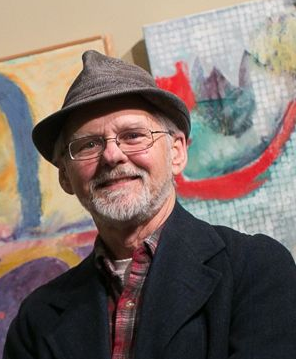By Editor
OLY ARTS writer Alec Clayton was invited to do a talk on his art at The Washington Center for the Performing Arts’ Center Salon. He prepared a PowerPoint presentation but was unable to use it because of the novel coronavirus pandemic. Center Salon was postponed to a date at which he can’t be available, so he turned the presentation into the following video: “Alec Clayton: 50 Years of Painting.”
Clayton grew up in Mississippi. He graduated from the University of Southern Mississippi and earned his master’s degree in drawing and painting from East Tennessee State University. His paintings were shown in solo and group shows at University of Texas El Paso, the Meridian Museum of Art, University of Southern Mississippi and in a traveling show in South Korea.
Since moving to Olympia, Clayton has shown in university galleries, college galleries and commercial galleries in Seattle, Tacoma, Olympia and Portland. He writes art criticism and theater reviews for The News Tribune, the Weekly Volcano and OLY ARTS. Clayton retired from painting in 2009. In his artist statement, Clayton writes:
I was honored to be asked to put together this presentation. It was fun compiling representative works from a half century of painting and deciding what I wanted to say about them. What I do not say in the video is that I have been influenced by artists from Michelangelo to Van Gogh to Picasso to Warhol, but primarily by the painters in what was called the New York School or the Abstract Expressionists. I am now and have always been enamored of romantic/expressive art with exuberant brushstrokes, sweeping gestures and exciting textures. I tried to capture in my painting not so much the look, but rather the feel — the emotions, the tension and the joy — of humans and animals fighting, dancing and making love. My paintings were often figurative and more often abstract, and often combined the two. You will see in my paintings arms, legs, torsos and purely abstract shapes that twist, turn, pounce and slither. I tried to create a delicate balance between contrasting elements such as thick and thin, rough and smooth, spontaneous and studied. When Jackson Pollock was asked why he didn’t paint from nature, he said, “I AM nature.” That’s what I sought in my paintings.

